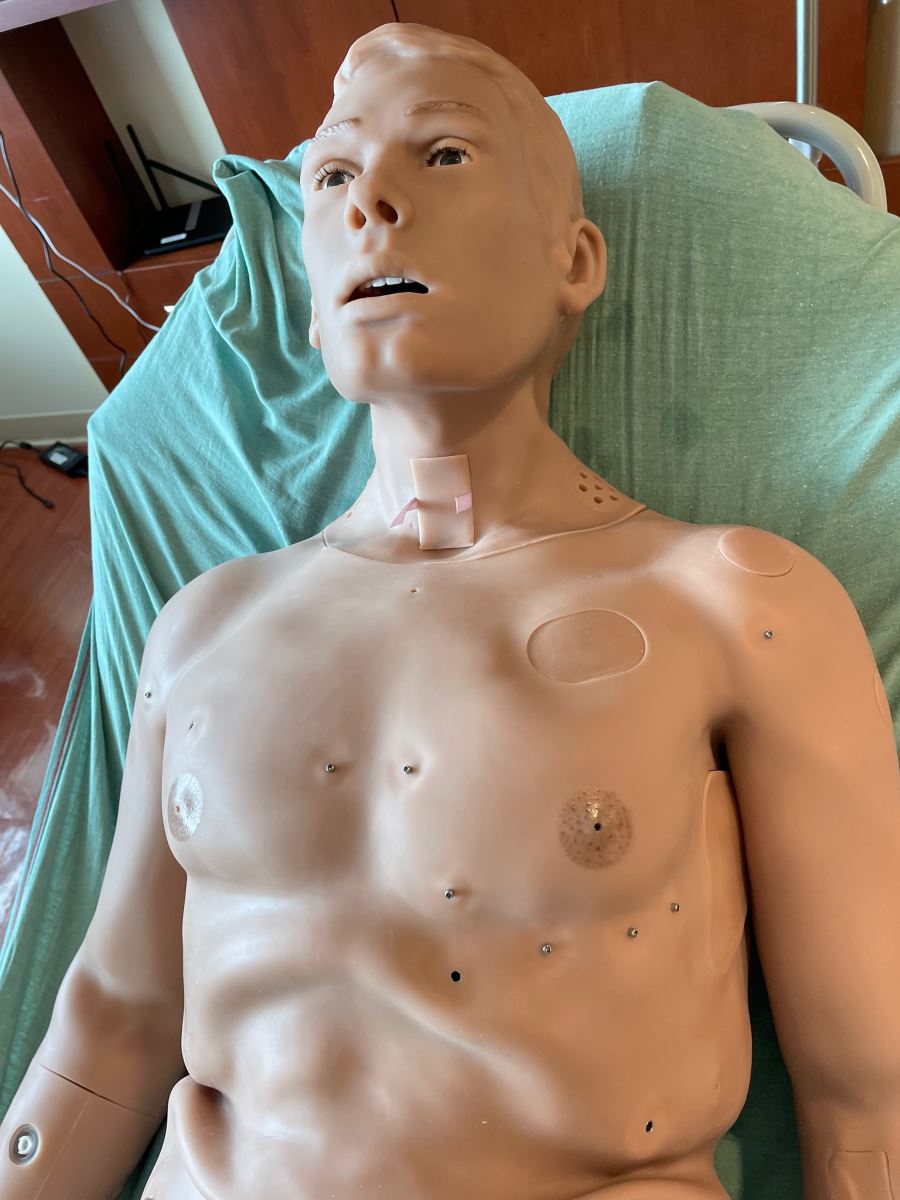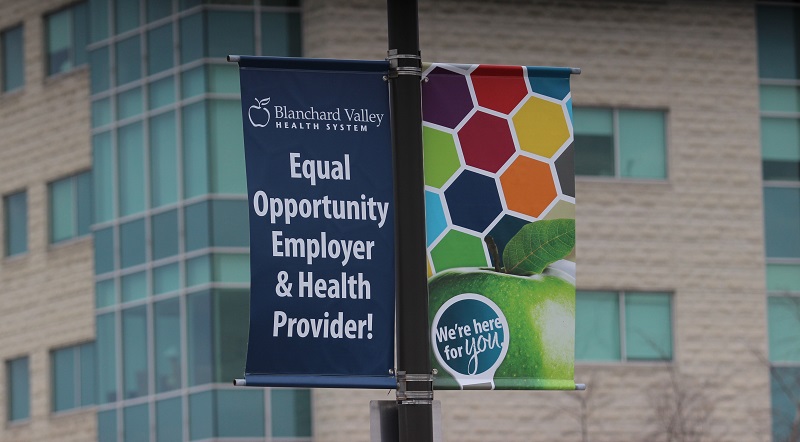BVHS Associates Training On Realistic Simulator
(From Blanchard Valley Health System)
Blanchard Valley Health System associates have been honing their skills for several years on manikins in the Simulation & Innovation Center at Blanchard Valley Hospital. But a new high-fidelity manikin is giving them the chance to practice on an artificial “patient” who is closer to a real human than any previous models.
The simulator (pictured below) can be used to train healthcare professionals on a variety of possible scenarios, but it is especially designed for emergency and critical care.
Gaumard, the company which makes the manikin, has given this model the designation of HAL S5301. But the individual HAL S5301 residing at Blanchard Valley Hospital is known as “Casey.” BVHS is one of only a handful of facilities in the world to purchase this model.
Jason Brunswick, MSN, RN, simulation and clinical education coordinator at BVHS, said as simulators evolve, interacting with them becomes closer to what interacting with an actual human patient would be like.
“This new simulator is as realistic as it gets,” he said. “Casey’s additional functions allow our associates to practice a wider range of procedures on him. In addition, it feels a little more natural to interact with someone who feels more like a real person.”
With more realistic, silicone-based skin and the ability to change facial expressions like facial drooping to simulate a stroke to provide nonverbal cues, Casey looks more human than previous models.
The latest technology means he also has more functions, allowing for greater training potential.
Casey has lifelike motor movement and sensory responses as if to pain or pressure. He can bleed heavily as if from a gunshot wound or experience an airway emergency. He can have seizures, appear to be in pain, or sweat profusely as if experiencing a heart attack. He can shake hands, allowing associates to assess grip strength. In addition, his pupils react to light, and can change in size to indicate a stroke or a drug overdose.
Artificial intelligence even allows Casey to answer questions autonomously. Brunswick said this is good for enhancing critical thinking and practicing clinical decision-making. For example, if Casey says simply “My belly hurts,” the healthcare professional will then need to ask follow-up questions to pinpoint the cause.
A wide variety of medical professionals will practice caring for Casey. Some BVHS respiratory therapists were among the first. The simulator is designed so respiratory therapists can practice putting the “patient” on a ventilator, and then adjusting that ventilator’s settings as needed.
Casey is likely to receive care also from the nurses in the new nurse residency program at BVHS. He will also be used to train associates on trauma care. Associates can practice intubation, treating abdominal bleeding or applying a tourniquet to a limb. Casey can also provide real-time feedback on CPR technique, such as an assessment of the depth and rate of compressions.
BVHS recently received a separate module which will allow associates to perform ultrasounds on Casey. This module offers a comprehensive library of emergency conditions and trauma injuries, each featuring true-to-life abdominal anatomy and physiology.
Brunswick said training for many healthcare professions involves more hands-on practice, as opposed to lecture time, than it once did. Practicing their skills on a manikin has made associates more confident about just jumping in when they encounter the same situation in a real patient.
“Our associates may encounter some of these situations relatively rarely, but they need to be prepared when they do,” Brunswick said. “Practicing many times on a simulator like Casey allows them to truly develop muscle memory, so when they do encounter a similar situation in a real patient, they can react more confidently and automatically.”
Blanchard Valley Hospital obtained its first simulator in 2017. The simulation lab has since grown to include several manikins including adults, a newborn, an older child, and a pregnant mother and baby. It has been funded through the Blanchard Valley Health Foundation, which in turn receives donations from community members and BVHS associates.
To learn about the comprehensive services available at BVHS, please visit bvhealthsystem.org.


